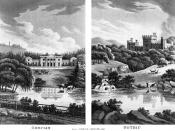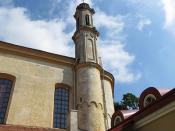Neoclassicism and the Enlightenment
The Enlightenment was a time of great innovation and evolution. One of the most significant movements which owes at least the majority of its beginnings to the Enlightenment is the architectural and artistic movement of Neoclassicism. This Neoclassicism of the mid eighteenth to mid nineteenth centuries is one that valued ancient Greek, Roman, and Etruscan artistic ideals.
These ideals, including order, symmetry, and balance, were considered by many European generations to be the highest point of artistic excellence. Although many movements in European art were largely devoid of classical characteristics, they were always looked to as sources of inspiration and were revived as significant movements at least three times throughout European history, in the twelfth century, during the Renaissance, and during the age of the present topic, the Enlightenment, with its development of Neoclassicism.
There are several events and movements within the Enlightenment that contributed to the rise of Neoclassicism.
The expansion, evolution, and redefinition of the European standard classical education was one of the greatest causes, as well was the then recent archeological discoveries of Pompeii and Herculaneum. The rise in commissioned art and architecture and the refinement of art scholarship also gave rise to this movement. Finally, the general reaction to the exorbitant styles of Baroque and Rococo necessitated a return to the more orderly ideals of antiquity.
The Neoclassical movement, for the purposes of this paper, can be defined as the movement that, from 1750 to 1830, looked back to the Greek and Roman artists, philosophers, and ideals as the highest point in artistic achievement and then attempted to combine antiquity's feelings of solidarity and harmony with new designs to create a vibrant and exciting, yet distinguished and restrained art form. From the "rustic hut" to Doric to Corinthian the art of the...
![[Piazza Navona, Rome, Italy] (LOC)](https://s.writework.com/uploads/5/50515/piazza-navona-rome-italy-loc-thumb.jpg)

